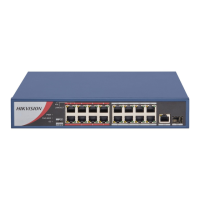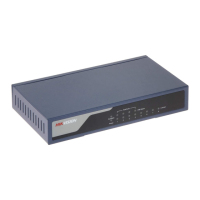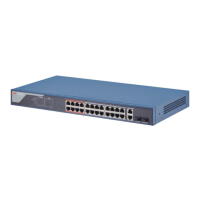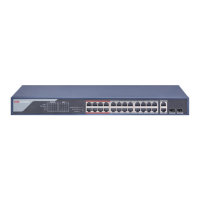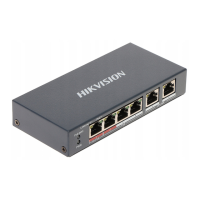Installation Manual of DS-3E2300P Series Ethernet Switch
[选取日期]
- 16 -
Chapter 5 Hardware Fault Analysis
5.1 Fault Separation
The key for resolving the systematic faults is to separate the fault from the system. You can
compare what the system is doing with what the system should do to detect the fault. You need to
check the following subsystems:
Connection of the power supply and the cooling system — the power supply and the fan;
Port, cable and connection—ports on the front template of the switch and the cables
connecting these ports.
5.1.1 Faults Relative with Power and Cooling System
Do the following checkups to help remove the fault:
When the power on-off is at the “ON” location, check whether the fan works normally.
If the switch is too hot, check whether the air outlet and air inlet are clean and then do
relative operations in section 2.3 “Requirements for Common Locations”.
If the switch cannot be started and the PWR indicator is off, check the power.
5.1.2 Faults Relative with Port, Cable and Connection
Do the following checkups to help remove the fault:
If the port of the switch cannot be linked, check whether the cable is correctly connected and
whether the peer connection is normal.
If the console port does not work after the system is started up, check whether the console
port is set to a baud rate of 9600 bps, eight data bits, no sum check bit, one stop bit and no
traffic control.
5.2 LED Description
The LED shows that the switch is running. The following table shows the LEDs of the DS-3E2300P
switch and their description:
